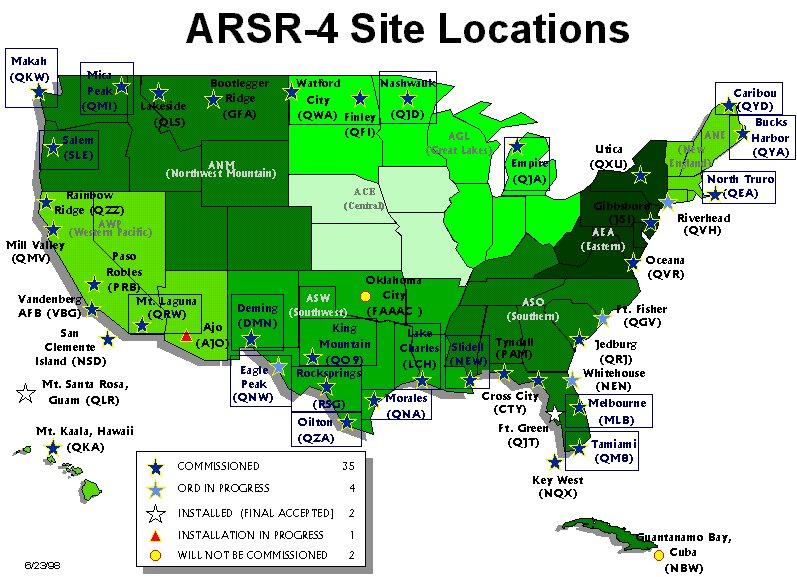





The Joint Surveillance System is a network of long range surveillance radars, primarily operated and maintained by the Federal Aviation Administration (FAA), but providing communication and radar data to both FAA and USAF control centers. The newest long-range search radar in the Joint Surveillance System (JSS) that has recently been fielded is the Air Route Surveillance Radar Model 4 (ARSR-4). Providing air defense and air traffic control for the continental United States, Guam, and Hawaii, forty joint radar sites were installed during the 1992-1995 period. The ARSR-4 was fielded through a $1 billion Congressionally mandated joint FAA and Air Force program, and each station costs over $12 million.
The FAA also operates several versions of Air Route Surveillance Radars (ARSRs) for air traffic control in the adjacent 1215-1350 MHz band. These radars include the ARSR-1, ARSR-2, and ARSR-3. The ARSR-4 Long Range Radar (LRR) Replacement program is designed to replace obsolete FAA air route surveillance radars (ARSR-1/2) and Air Force long range radars (FPS-20/60 series) at 39 operational joint-use facilities with new ARSR-4 systems, establish a new ARSR-4 "FAA only" site at Caribou, Maine, provide 1 ARSR-4 system to the FAA's training and support facility in Oklahoma City, OK, and deliver 3 additional systems to the Department of Defense. Forty-three of the 44 total systems have been installed and accepted from the contractor, Northrop Grumman Corporation, as part of the FAA/Air Force Radar Replacement (FARR) program.Compared to the radars it replaced, the ARSR-4 is more reliable, easier to maintain, and increases the radar coverage area from 200 to 250 nautical miles. This three-dimensional, solid state, unattended, long rang surveillance radar has an operational frequency range of 1215-1400 MHz and uses dual-channel frequency hopping technology for long-range and anti-jam search and tracking, and is capable of detecting small objects by minimizing clutter, weather, and multipath effects. Each channel pair requires 83 MHz of frequency separation to maintain its highest possible reliability. This radar system supports defense of the national airspace and provides initial coastal civil air traffic control.
The FAA and Air Force are also concerned that continuing to reallocate spectrum used by the ARSR-4 will further impact the dual-frequency hopping capability that is key to its design. The Air Force states that the need to have frequency-hopping, anti-jam capabilities and the use of Air Traffic Control and other radars will make retuning and/or restricted use difficult in some areas. The Air Force maintains that the reallocation of the 1385-1390 MHz band segment will degrade the radar�s frequency hopping capability that is key to its design for antijamming defense. The FAA and Air Force state that reallocation at a minimum could require software modifications estimated to cost $35 million. Spectrum congestion already exists in this band and if the remaining available frequencies cannot support future dual-frequency requirements, hardware modifications estimated at $588 million and taking 5 years to complete will be required.
